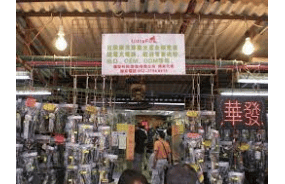Here’s an excerpt – the full article is definitely worth a read
Fong stopped at the booth on Apliu Street that sold flashlights and lasers and talked with the saleswoman about the features and strengths of various models. He bought 10 laser pointers the size of handheld flashlights. Each beamed a vivid blue. Fong would later say that he went to Apliu Street to prepare for a student orientation activity. The laser pointers, he would insist, were meant to help new students gaze at the stars.
With his purchases secured in a white plastic bag, Fong headed toward a nearby 7-Eleven to buy cigarettes. When he was just outside the shop, a man in plain clothes flashed an ID. “Police. Stop.”
MOST OF THE world remembers images from Hong Kong in the summer of 2019: the young people in black packed into streets as Molotov cocktails flew overhead, the police smashing their batons, the clouds of blinding tear gas. Today, three years after the protests, Hong Kong is a city suppressed. During the Covid pandemic, government orders kept people home and gave police incentive to stop and search anyone not wearing a mask properly. After Omicron ripped through nursing homes earlier this year, the government continued to ban groups larger than four from gathering in public places.
Much of this was due to an unprecedented new security law that Beijing imposed on the city in June 2020. Its broad provisions and unpredictable enforcement gutted the city’s democracy movement, and the richness of civic life vanished. Once-frequent rallies, public debates, open forums, and large campus meetings about opposition politics are no more. Most human rights and democracy groups have closed down. No journalist, academic, or artist who works with words feels completely secure. Documentaries that officials say could endanger national security interests, including those about 2019, are banned. Public libraries have locked up books by activists, as well as journalists’ accounts of the protests. The city’s broadcaster, RTHK, has scrubbed its website of most reports from that time. Gone are the official archives of Apple Daily, Stand News, and Citizen News, after arrests and threats forced the media companies to close.
By spring 2020, Hong Kong police had arrested 10,270 people and no doubt detained more, in what the government euphemistically refers to as the “social unrest.” Prosecutors brought charges against a fourth of those arrested. Since the imposition of the new security law, more than 160 people have been arrested, including many prominent activists.
The “social unrest” still lingers, at least in the court system. As of February, the government had brought charges against 2,800 people, about half of whom were found guilty or signed orders to obey the law. Hundreds of people arrested during the protests are serving terms in prison and juvenile detention centers. Each day, in courthouses all over the city, magistrates and judges oversee cases of public disorder, assault, weapons, and riot. Protest nights play out inside courtrooms, as prosecutors show video snippets of black-clad youngsters at barricades, sometimes throwing bricks and smashing windows. The prosecutors portray the protesters in the videos—which are stripped of context and background, with almost no views of police actions—as violent offenders. New cases begin in court all the time; most crimes in city ordinances carry no deadlines for filing charges. A person who was accused by police of unauthorized assembly in 2019 could wind up charged months or even years later. Hong Kong’s young are a generation in limbo waiting for this era to end.
Read the full article:
https://www.wired.com/story/hong-kong-protests-things-they-carried/




